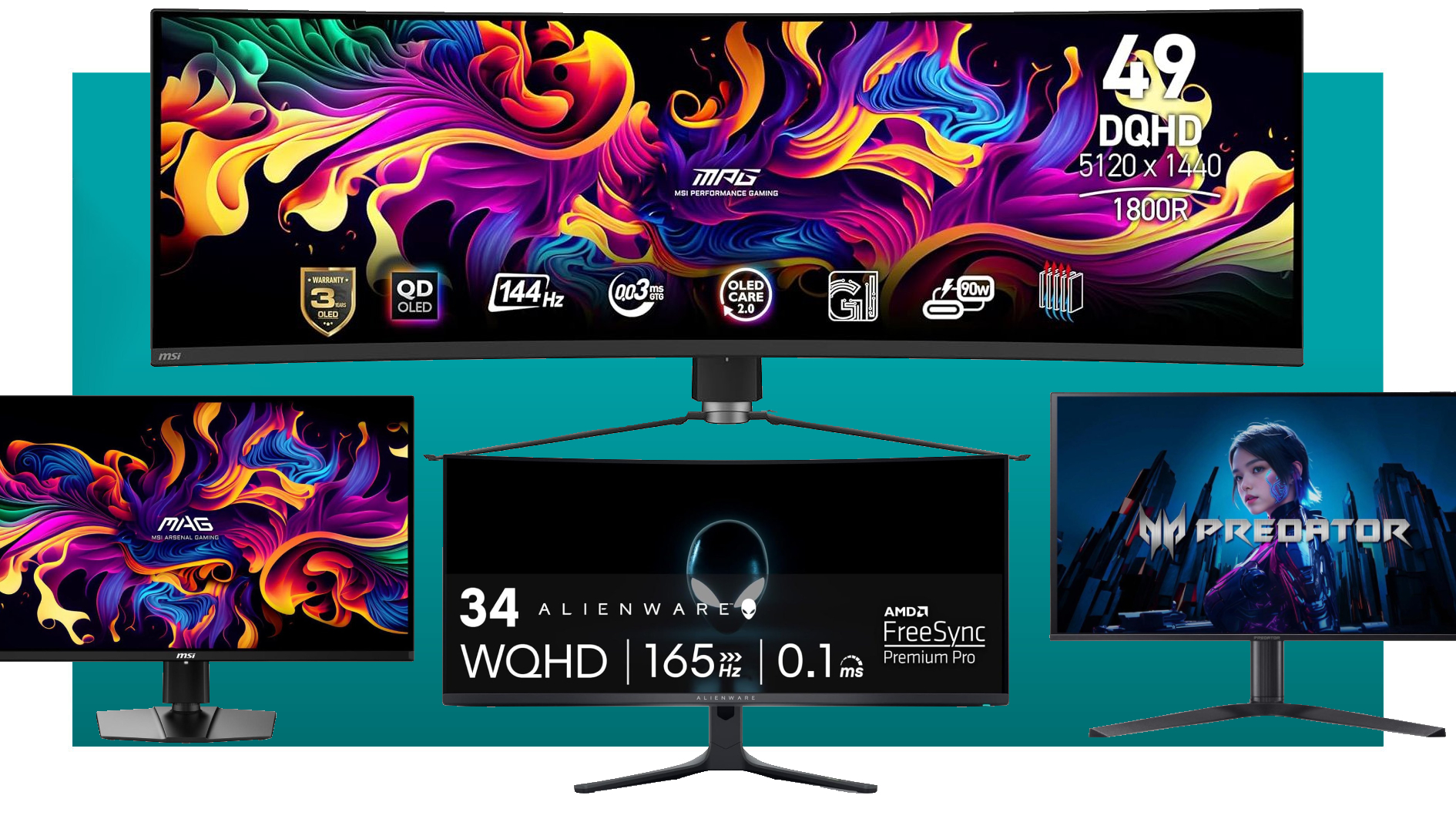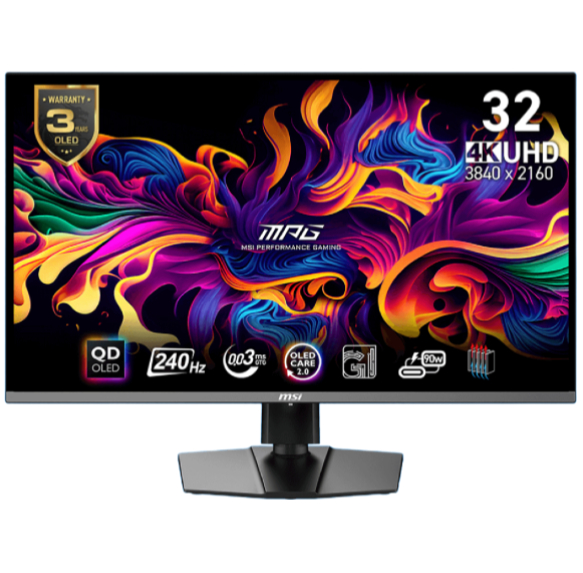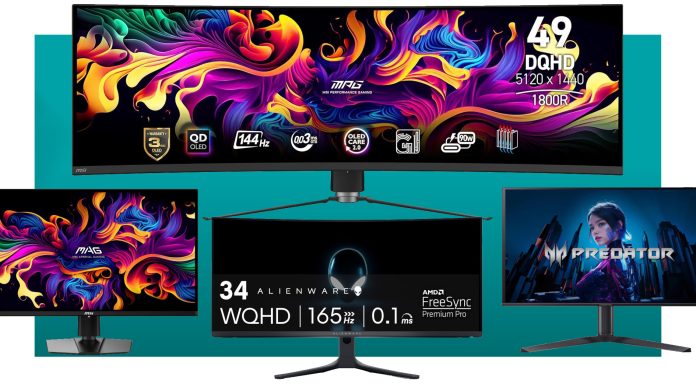
Resistance is futile, the change is already upon us. OLED is taking over the gaming monitor market, and for good reason. OLED technology is so much faster than any LCD-based display. It also offers perfect per-pixel lighting that blows away even the best local-dimming systems in LCD monitors.
OLED is not, of course, perfect. Apart from anything else, it’s hella expensive. At least it used to be. As these early Amazon Prime Day deals demonstrate, prices are coming down. Originally, pretty much any OLED gaming monitor was going to cost you north of $1,000. Now they start at under $500.
👉Shop all the early Prime Day deals on Amazon👈
Admittedly, that’s still more than an equivalent LCD-based monitor. But if you view a monitor as a long term investment—and I think you should—then there are some very appealing prospects here, whether you favour 27-inch 1440p, 34-inch ultrawide, 32-inch 4K or a 49-inch uber-wide monster. And even the most expensive is well under $900.
Of course, the one major remaining doubt regarding OLED is burn in. However, both in our experience and that of independent testing, it’s proving to be at worst a very minimal issue with long term usage. Purely for gaming, burn-in almost certainly won’t happen and short of the most extreme worst-case usage scenarios, at least five years of regular daily uptime without really distracting burn in seems likely.
Quick links
- Acer Predator X27U | $499 @ Newegg
- Alienware AW3423DWF | $499 @ Amazon
- MSI MAG 321UP | $770 @ Newegg
- MSI MPG 491CQP | $849 @ Amazon
Acer Predator X27U
Give it up for the sub-$500 OLED gaming monitor. At this price point, it’s going to be a 27-inch 1440p model. However, the good news is that this is the updated model with a Samsung QD-OLED panel, so full-screen brightness is a bit punchier than the original model.
On that note, it’s important to register that this is the X27U X1Bmiiphx. Acer’s naming scheme for monitors is truly appalling and there are several X27U models, each quite different. Anywho, aside from the QD-OLED panel tech and 1440p resolution, you get 240 Hz refresh.
There are now faster 1440p OLEDs. But 240 Hz is pretty quick and combined with QD-OLED’s 0.03ms response performance, we’d prefer this over any LCD with higher refresh, even for esports. For everything else, the QD-OLED panel tech ensures fabulous HDR performance.
As for downsides, the panel size is on the small side and Acer’s warranty doesn’t explicitly guarantee burn-in cover. But if you’re in the market for a 27-inch 1440p OLED, this one is stellar value.
Alienware AW3423DWF
Alienware has just updated its 34-inch ultrawide OLED offering. But I wasn’t blown away by the upgrades with the new Alienware 34 AW3425DW. I’m not wild about the new chassis design and the panel isn’t much of a step forward, either.
But that’s good news for this “old” Alienware AW3423DWF, because it makes the $130-ish saving over the new model pretty appealing. The main spec hit you miss out on is 240 Hz, with this monitor topping out at 165 Hz.
Other than that, it’s the same Samsung QD-OLD panel tech with stellar HDR performance and ridiculously fast response times. Personally, I much, much prefer this 34-inch ultrawide form factor over the 27-inch 1440p alternative. It’s suboptimal for esports, but it’s miles more immersive for every other kind of gaming, a great for multitasking on the desktop, too.
My only concern is the relaitvely low pixel density. But then that’s the same problem with most 34-inch ultrawide LCD monitors. There are now some 5K2K models, but they’re pricey and need one heck of a GPU to kept them fed with pixels.
MSI MAG 321UP
It’s a very tough call between this 32-inch 4K MSI and its 49-inch sibling. Both sport Samsung QD-OLED tech and thus full-screen brightness is decent and HDR performance is off the scale.
Pixel response is likewise a non-issue either way, though the larger 49-inch monster is a little slower in terms of refresh at 144 Hz to the 165 Hz offered here. For me, I’d be happy either way.
So the choice comes down to scale, immersion and multitasking props on the one hand, versus detail, precision and sharpness on the other. This 4K panel absolutely blows away the 49-inch behemoth when it comes to pixel density.
That means much clearer, sharper image quality, loads more detail, far crisper text rendering, the works. The 32-inch form factor is more practical, too, in terms of desk space. I’m torn, I really am. But I think for most gamers, most of the time, this 32-inch model probably makes more sense.
MSI MPG 491CQP
This isn’t the perfect monitor for everyone. But if you value scale, immersion and unbeatable multitasking ability, look no further. This monitor has come for you.
You will, of course, need one heck of desk to accommodate this 49-inch monster. It is absolutely huge. But that means it shows off Samsung’s QD-OLED panel tech to the max. With LCD monitors this large, issues like viewing angles, backlight bleed and shonky local dimming are so much more obvious.
But you sidestep all that nonsense with this monitor’s perfect per-pixel, ludicrously fast response and excellent viewing angles. Granted, it doesn’t offer the fastest refresh out there at 144 Hz. But that’s plenty quick enough for fluid gaming. And, anyway, if you’re really into esports, a 32:9 aspect ubertrin like this isn’t going to be on your radar.
For me, the only downside is the slightly lowly pixel density. That’s not a huge issue in games. But it does mean that you don’t get super crisp fonts in Windows or that precision and detail which is characteristic of a 32-inch 4K model.
👉All of Amazon’s OLED gaming monitor deals are right here

